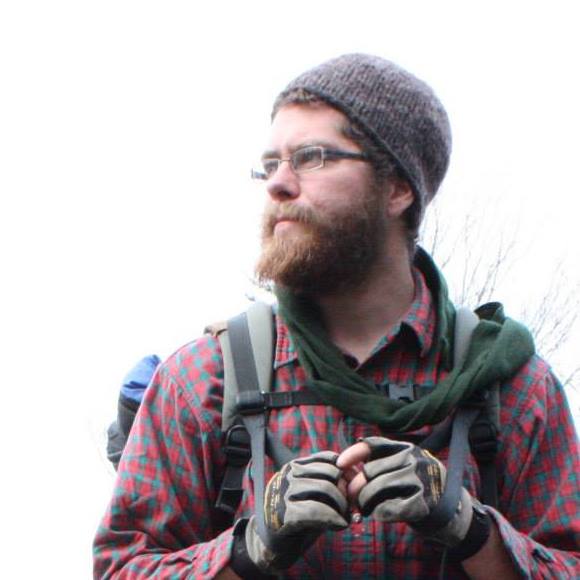
Josua Collins, artist
‘Mirroring [In] Between’
“My art practice on a broad level is twofold. On one hand, it is deeply environmental; it looks to engage our surroundings and help cultivate a sense of belonging within nature. On the other hand, my practice is fundamentally public; aspiring to be accessible to and engage a wide range of people.
“The opportunity for art on the rails to trails has long been a fascination of mine. The trails themselves don’t necessarily need the art in any fashion to be a precious resource. However, there is a degree of cultivation and required maintenance along the trail and an active investment in the vision and idea of the trail, and this idea needs to be tended, and I think art is a fantastic way to encourage this vision.
"This proposal starts with the familiar. It looks to create a moment for people to pause and immerse themselves deeper within these ecosystems. The proposal offers a moment between destinations. Specifically, this proposal would serve to further people’s deep relationships to the ground and to the sky; two prominent realms that the trail walks between.
“I would like to use semi-transparent mirrored plexiglass to create a canopy that deconstructs our relationship to both the sky above and earth below. The canopy would act as a stopping place, a way station. People in transit would have the opportunity to pause and take stock of themselves and of their surrounding environment. Mirrors have a strong and evocative capacity in this regard. Perhaps the artwork could be located near a body of water since water has a similarly evocative capacity. Water, too, recontextualizes and provides reprieve. The acoustic nature of the site would also be deeply important.
“The semi-transparent nature of this plexiglass would allow much of the bright light of the sky which silhouettes the surrounding trees to pass through and be visible from below, and yet the mirrored surface would simultaneously reflect colours, hues and details from the surrounding earth underfoot; blurring the relationship between earth and sky; layering the two realities over each other. The way that semitransparent mirrors work is that it highlights whatever is brightest. If the object in front of the mirror is brightest it appears more visible. If the object behind is brightest then the light from that object passes through the mirror and can be seen on the other side. I bring this up to emphasis that the experience of this public artwork would change drastically throughout the course of a day and as natural day lighting shifts. Each moment that someone visits the work the light would be unique, and the encounter would be dynamically different - yet similar - each time.
"Josh’s practice looks to bridge design, construction, environmental studies, and the facilitation of agency, identity, and curiosity. The realm of art provides opportunities for the direct navigation of both critical and light-hearted dynamics, the navigation of deeply personal and cultural issues. ART (supported by technical excellence and an emotional respect for those it accesses) possesses an incredible power as an agent of change, growth, and cultivation. The common perception of ‘installation’ gives way to ideas of (inter)action and (in)habitat(ion).
"Josh’s practice maintains a fundamentally environmental focus using the operative capacity of NOISE and lessons from acoustic ecology to gather and process the complexity of environmental conditions and establish the basis for interaction and inhabitation. He also maintains substantial emphasis on the role of LIGHT, relying both on the potency of its phenomena and on the sheer optimism and open-ended playfulness that it demands.
"Finally, Josh also has a deep ECOLOGICAL undercurrent to his work that feeds into his site-specific, process-based practice, always looking to learn through immersion. This ecological perspective overlaps dynamically with cultural and social interest. In the past few years, this has included work that balances a critique of privilege and patterns of colonialism with a universal accessibility to and cultivation of individual agency."
Practice
"The artist works halfway between what he knows and what he hopes to learn. His practice prioritizes an environmental approach, grounded in an immersion into local culture, ecosystems, and experiences. His work, while constructive and grounded in the trades, is fundamentally process-based and aspires to be available, collaborative and open to exploration. It is a construct for memory, history and sentiment."
